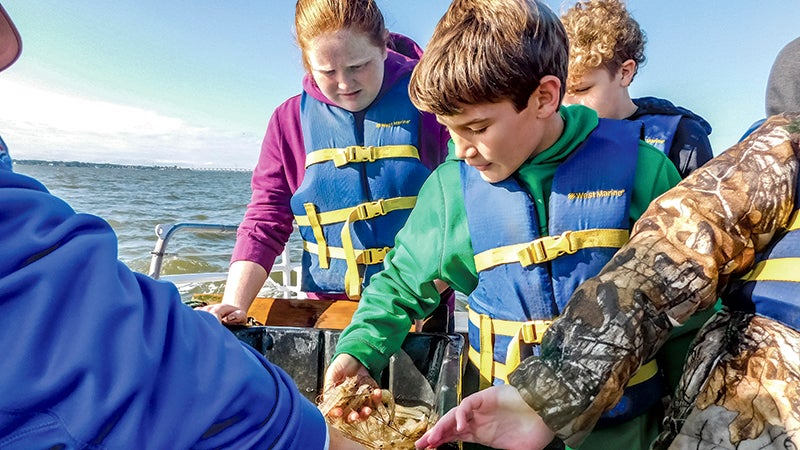School on water
Published 9:50 pm Friday, October 28, 2016

- More than 20 Forest Glen students participated in the Nansemond River Preservation Alliance’s annual boat trip program. Students learned about the area’s waterways and marine life.
Despite the breezy, cloudy Friday morning, Forest Glen Middle School seventh-graders were brimming with excitement as they waited for their boat trip to start. The trip, led by the Nansemond River Preservation Alliance, would take the group along the Chuckatuck Creek and the James River.
Throughout the week, seventh-graders from John Yeates, John F. Kennedy and King’s Fork middle schools participated in the program. On Friday, Forest Glen participated in the first session, and a second group of King’s Fork students participated in the second session.
Now in its fourth year, the program, specifically the boat trip, is very popular among the students. The program was made possible by the Dominion Foundation.
“It is an opportunity for students to get more involved with the water,” said Elizabeth Taraski, NRPA president and chief executive officer.
The trip is one of a few initiatives the alliance hosts as an effort to educate students about their surrounding environment and waterways.
“They love this — I love the boat trip too,” said Melissa Leuschen, seventh-grade science teacher at Forest Glen.
The group departed from the Volvo Penta marina around 8:45 a.m.
During various intervals on the trip, Yancey Powell, Chesapeake Bay Foundation educator, explained the characteristics and marine life found in the waterways.
First, a contraption was dropped into the water to capture oysters. After a few minutes, the device was full of rust-colored oysters. The students examined the specimen and listened to Powell to explain its characteristics and its filtration capabilities.
Then, the fun really began.
Prior to dropping a net into the water, a student “blessed” the net. This was a fisherman tradition to bring fortune for a good catch.
The ritual must have worked, because the group brought in one of the largest shrimp batches Powell had seen in his many years of doing the boat trips. Also among the shrimp were fish of various sizes.
The students took turns to categorize the shrimp and smaller fish from the larger fish. The majority didn’t seem to flinch as they moved the slimy, spiny critters. However, there were a few who shrieked as the animals wiggled their way out of their hands.
“You have kids that don’t normally talk that are opening up here,” Leuschen said.
The trip is not simply a day away from the classroom. Dr. Catherine Walsh, supervisor of science instruction for Suffolk Public Schools, said there has been a rise in science SOL tests scores.
She said it is “in part is due to this program.”
“They’re paying attention, they’re engaged. It’s about the relevance and the real world.”
Nia McKoy, 12, recommended the program to her fellow classmates “because it was a fun experience and we got to learn about different organisms.”
A couple of weeks ago, students participated in a salt marsh program at Bennett’s Creek Park. The site was packed with various stations where students learned about stormwater runoff, marine wildlife and natural buffers.
In the approaching weeks, NRPA volunteers will host seminars at local schools to further facilitate learning.





